Ellen’s exhibition in Munich was always going to be a pivotal event in the weavecoding project – one of the first opportunities to expose our work to a large audience. The Museum of casts of classical sculptures was the perfect context for the mythical aspects of weaving, overlooked by Penelope and friends with her subversive woven/unwoven work, we could explore the connections between livecoding and weaving.
Practically we focused on developing the tangible weavecoding exhibit for events later in the week, as well as discussing the many languages we have developed so far for different looms and weaving techniques. One of our discoveries is that none of the models or languages we have created seem sufficient in themselves – weaving could be far too big to be able to be described or solved from a single perspective. We’ve tried approaches describing weave structures from the actions of the weaver, setup of the loom and structure of the fabric – perhaps the most promising is to explor the story of weaving from the perspective of the thread itself.
One of the distinctive things about weaving in antiquity is how multiple technologies were combined to form a single piece of fabric, weaving in different directions, weft becoming warp, use of tablets vs warp weighted weaving. To explain this via the path of a single conceptual thread crossing through itself may make this possible to describe in a more flexible, declarative and abstracted manner than having to explain each method separately as if in it’s own world.
The pattern matrix has now been made into good shape for explaining the relationship between colour and structure in pattern formation. For the first time we also used all 4 sensors per block on the bottom row which meant we could use a special “colour” block that the system recognises from the normal warp/weft ones and use it’s rotation to choose between 8 preset colour settings. This was quite a breakthrough as it had all been theoretical before.
Adding this more complex use of the magnetic patterns meant that Alex could set up the matrix as a tangible interface for his tidal livecoding software meaning Ellen could join us for a collaborative slub weavecoding performance on the Saturday evening. The prospect of performing together was something we have talked about since the very beginning of the project, so it was great to finally reach this point. The reverb in the museum was vast, meaning that we had to play the space a lot, and provide ‘music for looking at sculptures by’:
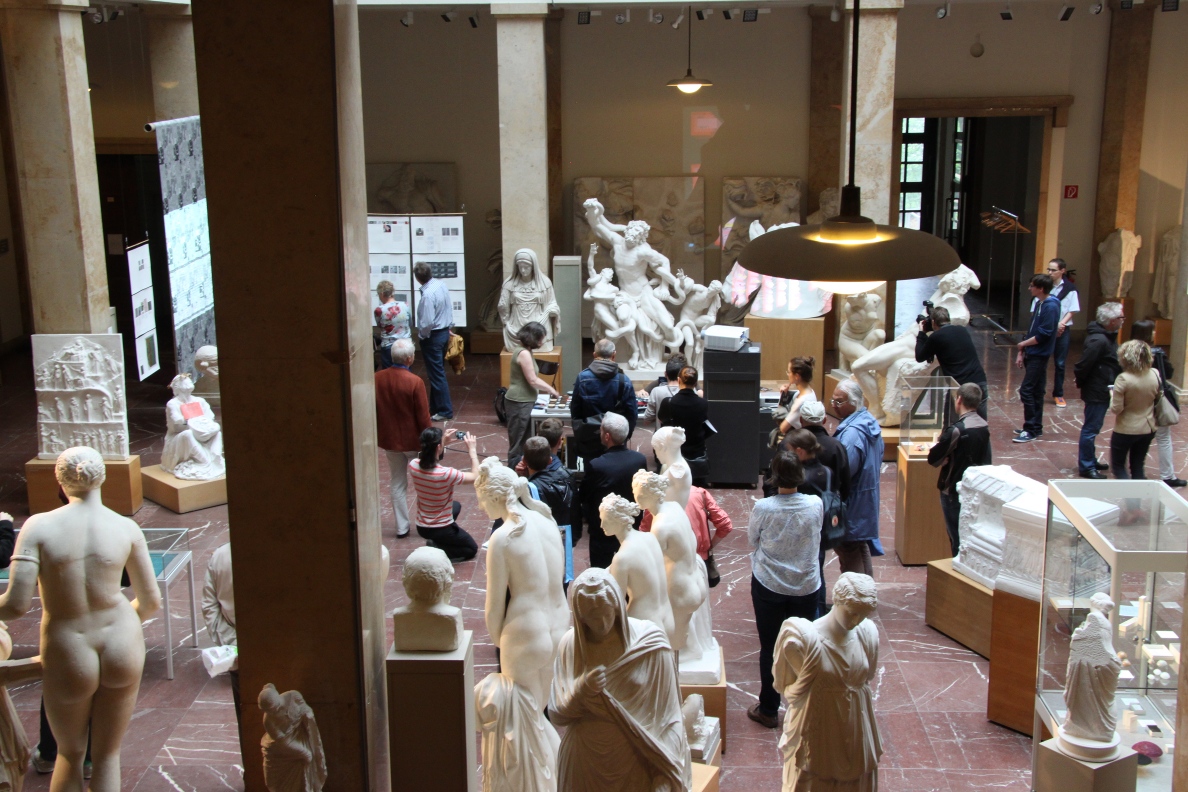
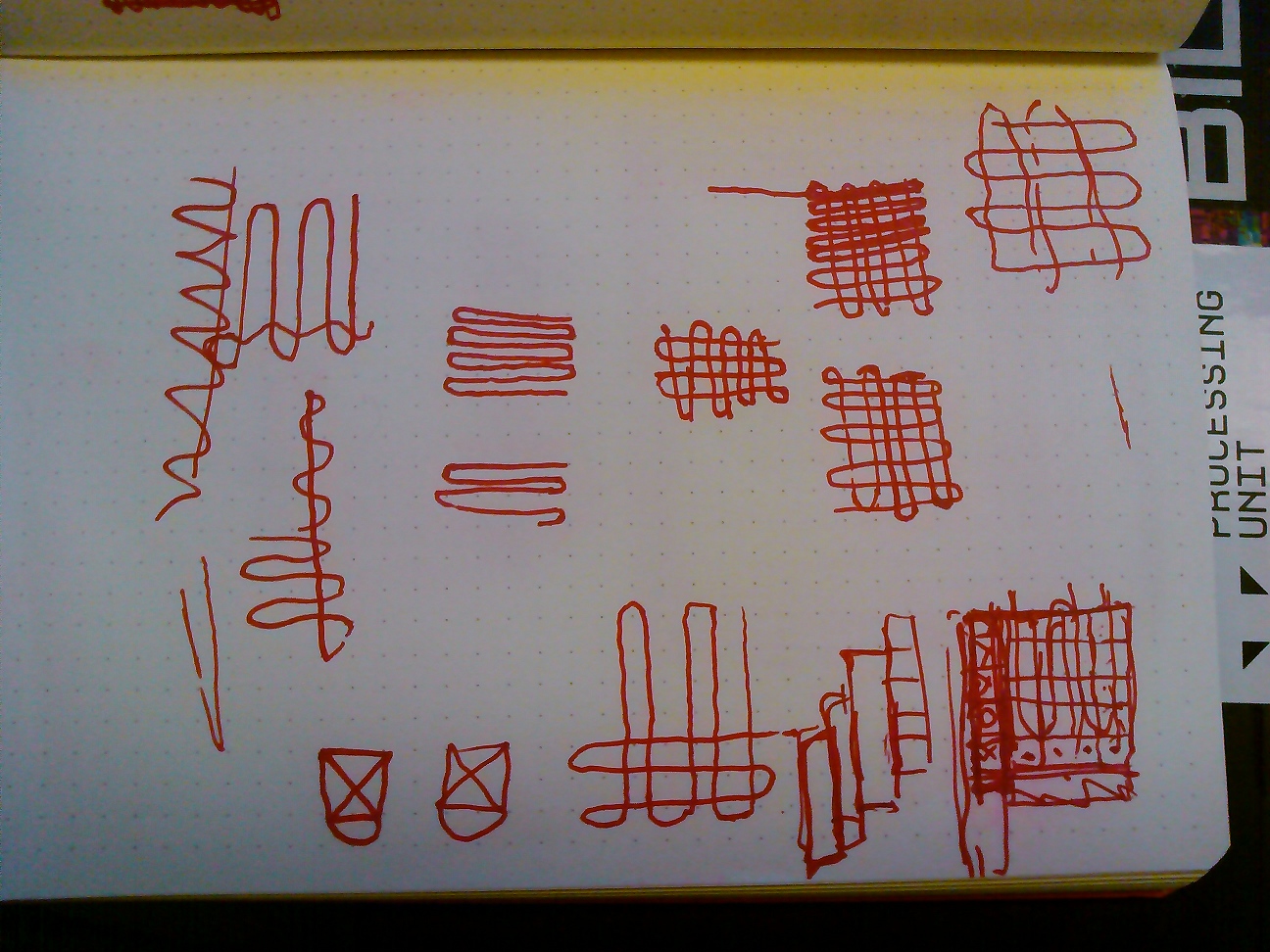
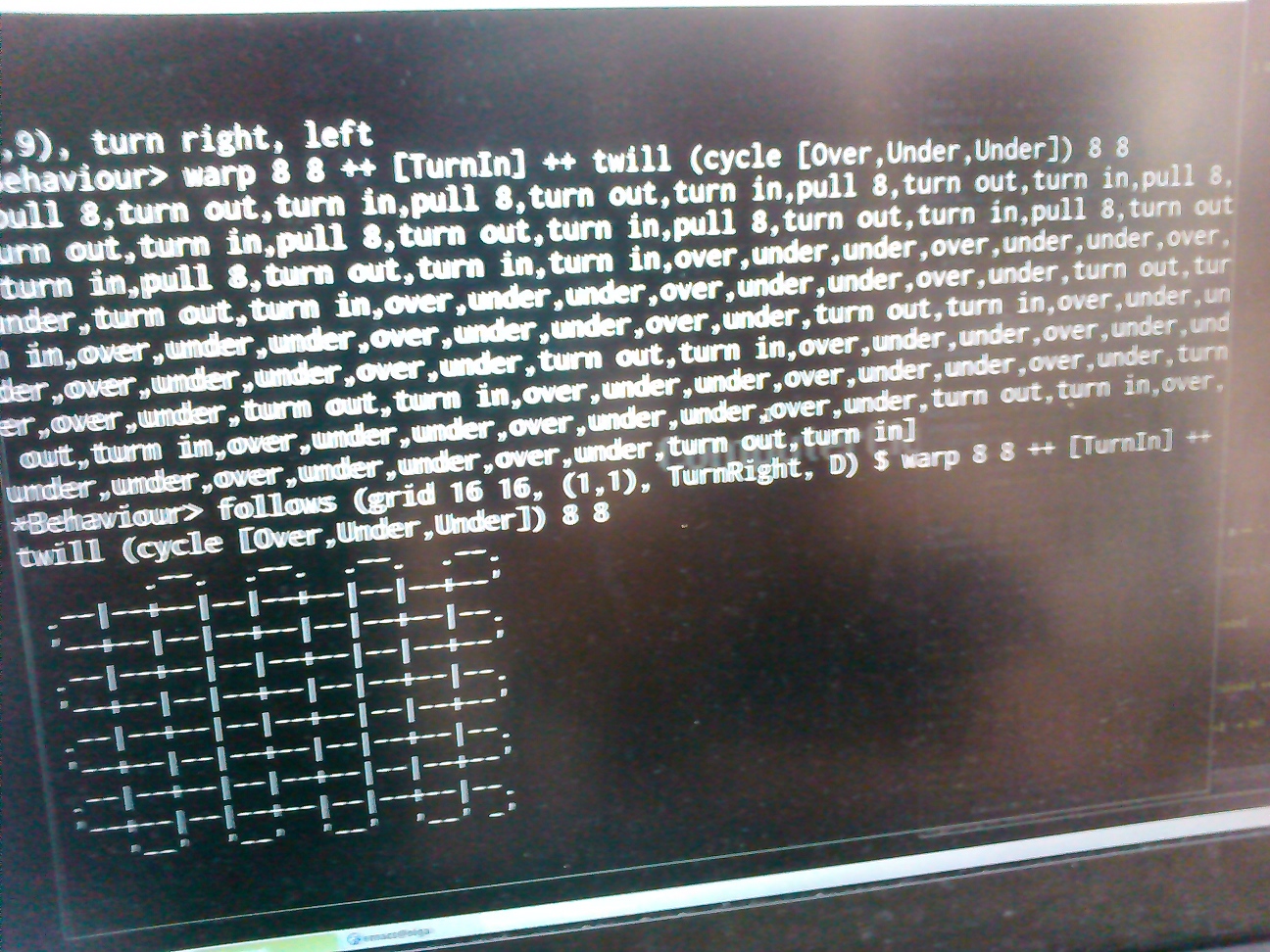
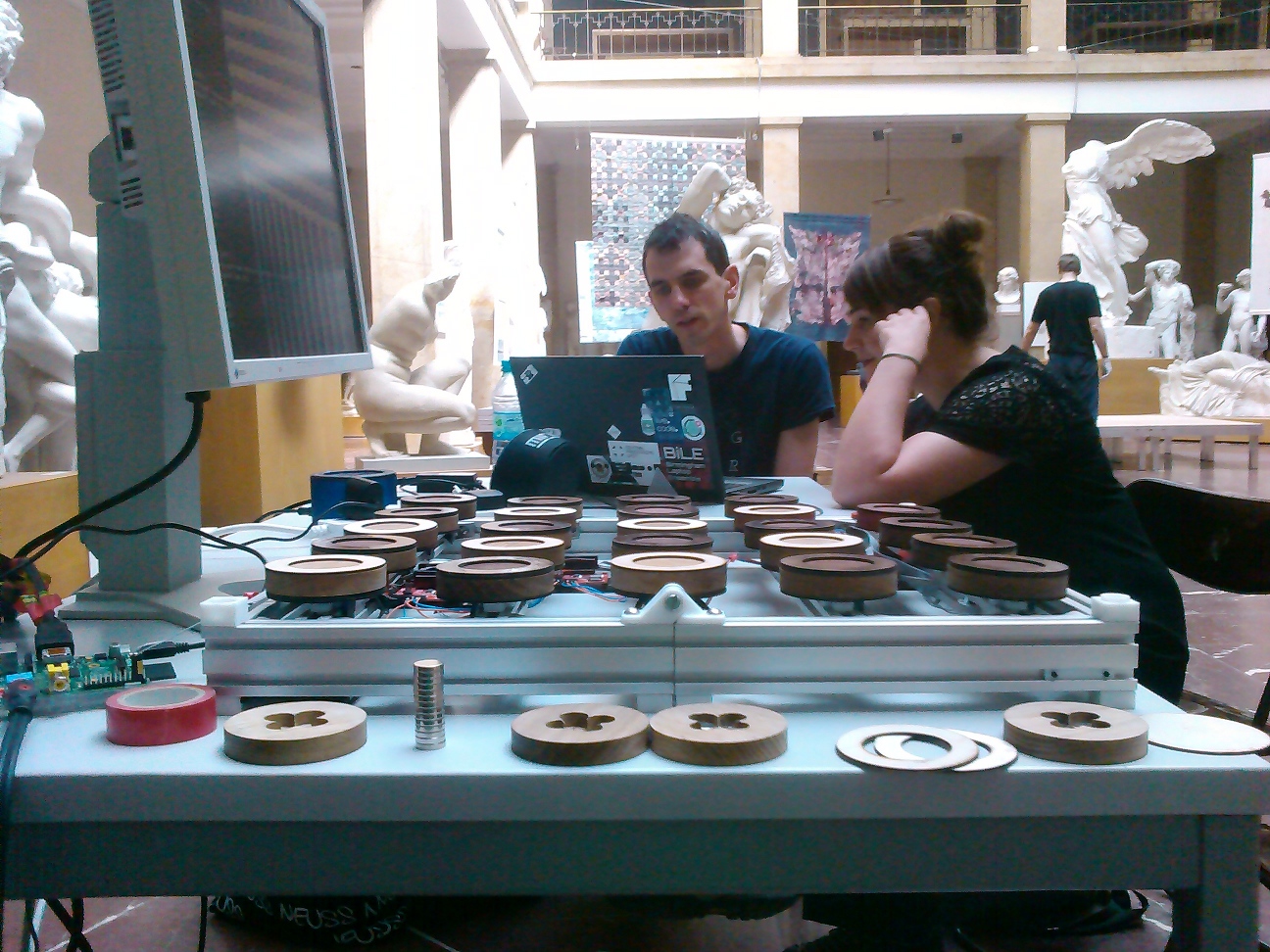
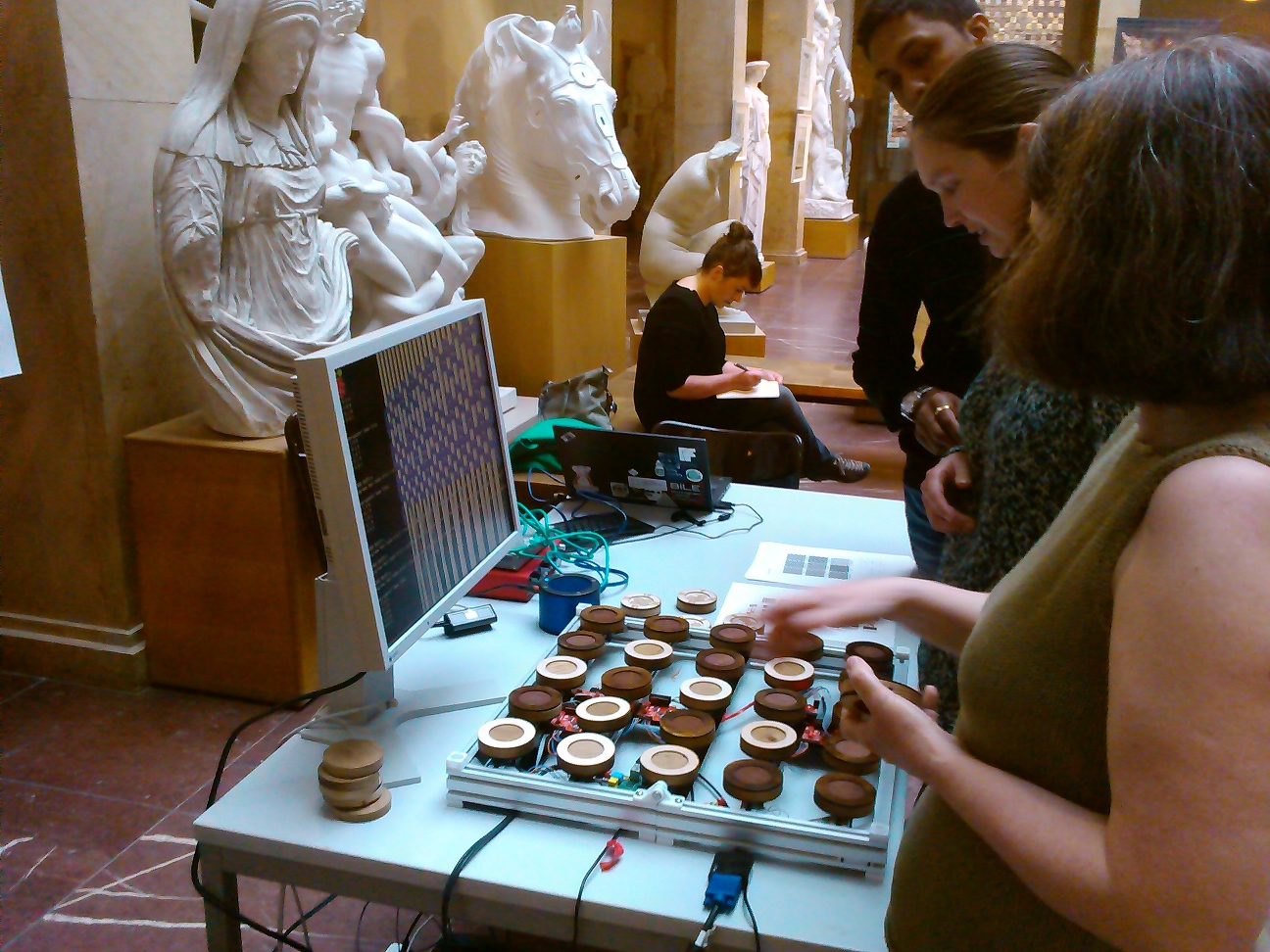
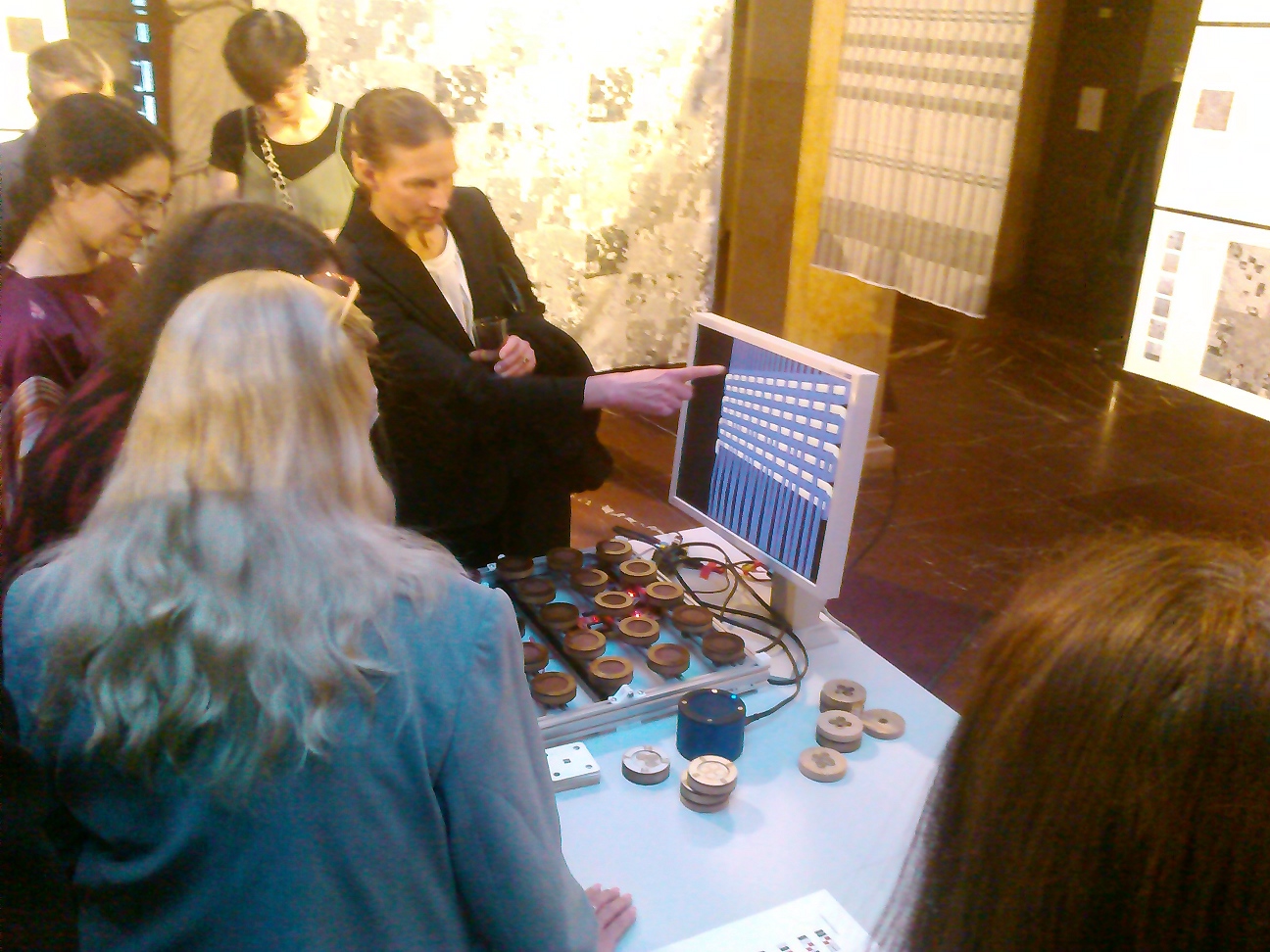
One thought on “Weavecoding Munich”